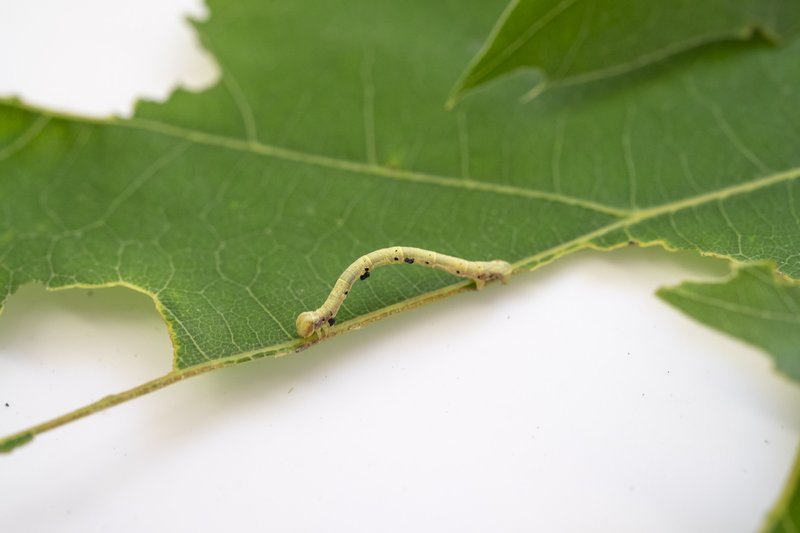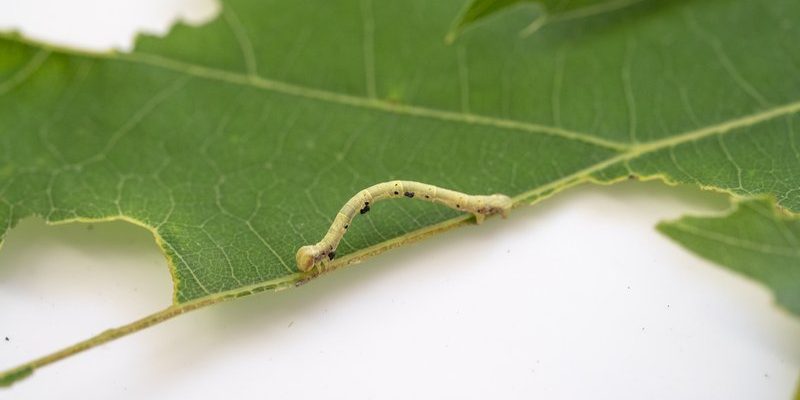
So, if you’re a tree lover or just someone trying to keep your yard healthy, it’s crucial to know which trees are most vulnerable to inchworm damage. Understanding this can help you take proactive measures to protect your trees. Let’s dive into it and explore some common tree species that inchworms love to munch on and how you can keep them safe.
What Are Inchworms and How Do They Damage Trees?
You might be wondering, what exactly is an inchworm? Well, they’re not actually worms! These are the caterpillar form of the moths belonging to the Geometridae family. They got their name because they move in a distinctive “inching” motion, pulling their bodies in and then stretching out. This movement, combined with their often green or brown coloring, makes them great at blending in with leaves and branches.
Inchworms feed primarily on the leaves of various trees, and a few species can cause significant damage, especially in large populations. When inchworms munch on a tree’s leaves, they can strip them bare. This not only looks unsightly but can also weaken the tree, making it more susceptible to diseases and other pests. If the tree is young or stressed, the impact can be even worse, affecting its growth and vitality.
In addition to leaf loss, inchworms can create a cascading effect. Trees that lose a lot of leaves may struggle to photosynthesize properly, leading to reduced energy for growth. If left unchecked, this can even lead to tree decline or death, particularly in young or already weakened trees.
Common Tree Species Vulnerable to Inchworm Damage
Not all trees are created equal when it comes to their vulnerability to inchworm damage. Some species attract these pests more than others. Here are a few of the **most commonly affected trees**:
- Maples: Maple trees are a favorite among inchworms due to their tender leaves, especially the sugar maple. If your yard is filled with majestic maples, be on the lookout.
- Oaks: Many inchworm species love oak trees, especially young ones. Their large, broad leaves make it easy for these pests to settle in for a feast.
- Willows: Willow trees are also prime targets. Their cascading leaves provide a perfect dining experience for inchworms.
- Birch: Birch trees, with their light, delicate leaves, are another species that inchworms often target.
- Fruit Trees: Various fruit trees, including apple and pear, are also susceptible to inchworm attacks, which can affect fruit production.
Knowing which trees are at risk helps you stay alert. If you notice a tree on this list in your yard, be sure to keep an eye on it, especially in early spring when inchworm populations start to peak.
Signs of Inchworm Infestation
Detecting inchworm damage early can save your trees from extensive harm. Here are some key signs to watch for:
- Leaf Damage: The most obvious sign is missing leaves. If you see your trees losing leaves rapidly, it’s worth investigating.
- Droppings: Inchworms leave tiny black droppings on the ground or on the leaves, which can be a telltale sign of their presence.
- Webbing: Some inchworm species create webbing between branches. If you notice this fine silk, it’s a sign you may have a problem.
- Visible Caterpillars: You might actually spot the inchworms themselves on the leaves or branches, especially when you shake them off. They’ll often curl up when disturbed, camouflaging themselves with their surroundings.
If you notice any of these signs, it’s time to take action. The quicker you address the issue, the better chance you have of saving your tree from severe damage.
How to Protect Your Trees from Inchworms
So, what can you do to safeguard your beloved trees? Here are some practical and effective strategies:
- Regular Inspections: Make it a habit to check your trees for signs of inchworms, especially during the spring and early summer when they are most active.
- Insecticidal Soaps: If you catch an infestation early, using insecticidal soap can help curb the population. Just remember to spray in the evening when beneficial insects are less active.
- Hand Removal: For smaller trees, consider manually removing inchworms. Just be sure to wear gloves and dispose of them properly to prevent them from returning.
- Encourage Natural Predators: Birds and beneficial insects like parasitic wasps can help keep inchworm populations in check. Consider creating a bird-friendly environment by adding birdhouses or feeders.
- Professional Help: If you’re dealing with a significant infestation, don’t hesitate to contact a professional arborist. They can provide targeted treatments that ensure your tree’s health.
By being proactive about protecting your trees, you can help ensure they thrive year after year, regardless of inchworm threats.
Seasonal Considerations for Inchworm Control
Timing can make a big difference when dealing with inchworms. Their life cycle plays a significant role in how best to manage their populations. Here’s what you should know:
1. **Spring Awakening:** Inchworms typically emerge in early spring when trees start budding. This is when you’ll see them feeding most actively. Pay close attention at this time.
2. **Monitoring Throughout the Season:** Keep monitoring throughout the growing season. Even if you think you’ve tackled the problem early on, inchworms can have multiple generations in a single year.
3. **Late Summer Preparations:** By late summer, their numbers may dwindle, but they’re still around. This is the time to prepare for the next year’s invasion by cleaning up any fallen leaves where eggs might be laid.
Taking care of your trees means being aware of the potential threats they face, including inchworms. By knowing which trees are most vulnerable, spotting the signs of an infestation, and acting quickly, you can help protect your trees and keep your yard healthy. Remember, staying vigilant and taking proactive measures is the key to ensuring your trees thrive, providing beauty and shade for years to come. After all, a healthy tree is a happy tree! So, grab a cup of coffee, step outside, and enjoy the beauty of your flourishing trees.

